[APX, Atari 8-bits]
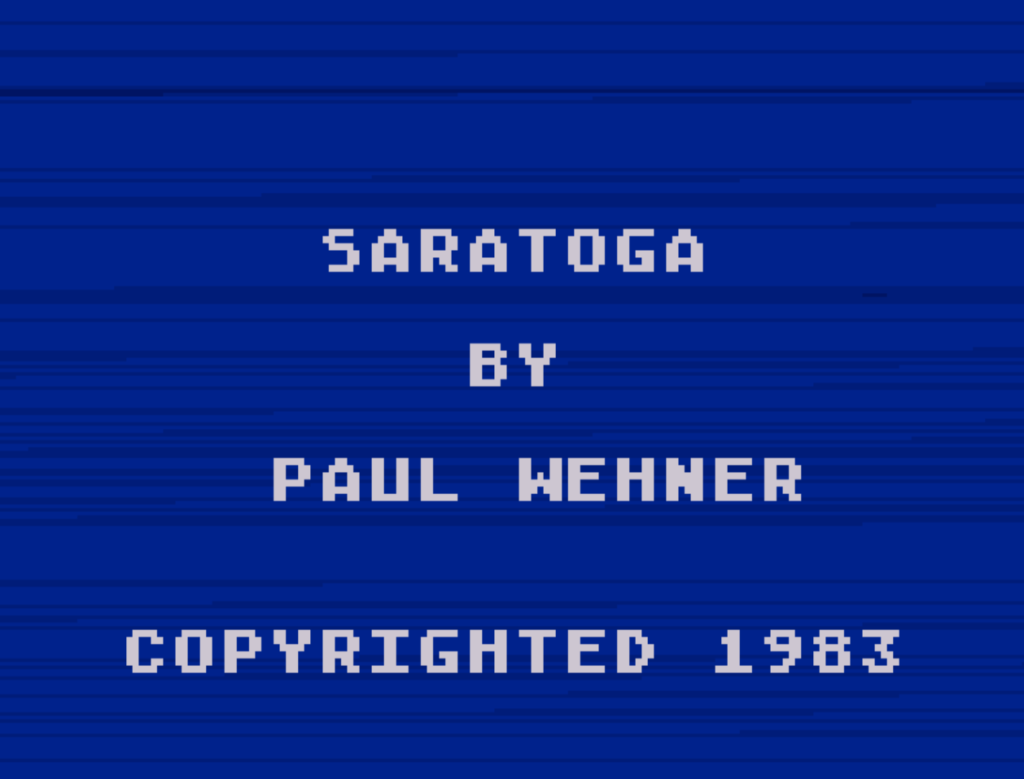
Lieutenant Narwhal, what can you tell me about the campaign of Saratoga ?
A fascinating moment ! It had all the features of great campaigns ! Blitzkrieg, deep operations and massive frontlines running for hundreds of miles !
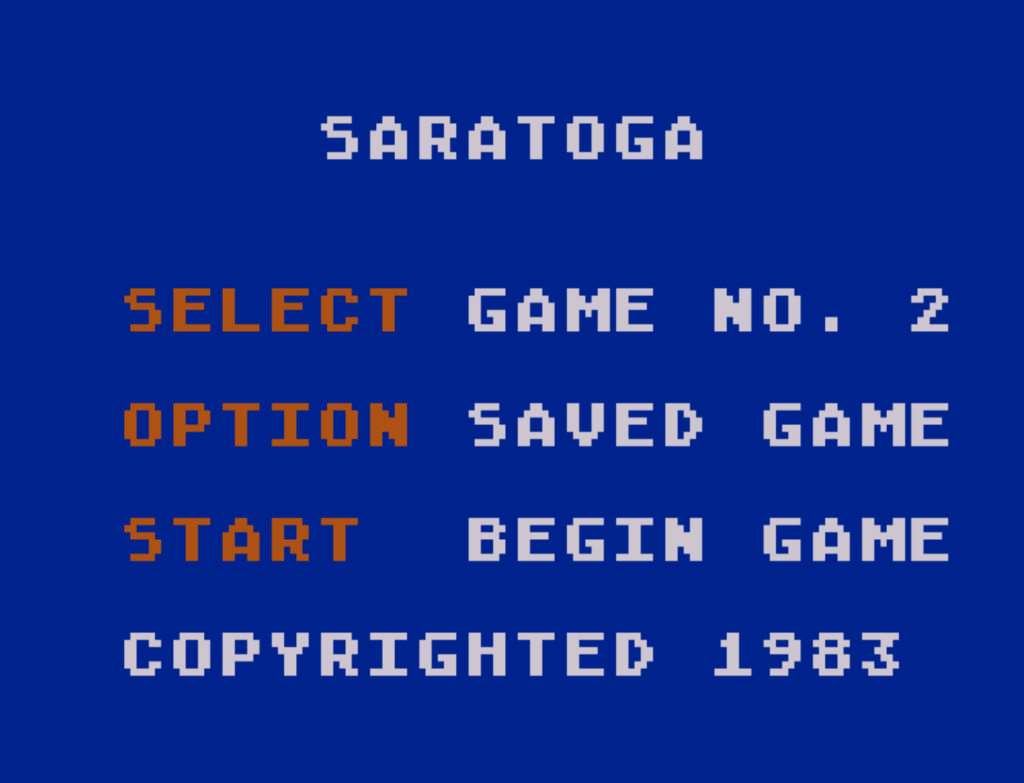
The Saratoga campaign, which took place from June to October 1777, was a key moment in the early stages of the American Revolutionary War. The British had hoped to divide the fledgling Republic in two by launching a three-pronged attack on Albany. However, the campaign was plagued by logistical issues, faulty intelligence, and horrible communication. Barry St Leger coming from the West was stopped in front of Fort Stanwix and Lord Howe who should have come from New York instead decided to attack Philadelphia, leaving John Burgoyne’s army coming South from Quebec massively outnumbered. In the final two battles of Saratoga (some 50 miles North of Albany), John Burgoyne and his forces were decisively defeated, with over 6,000 British, Hessian, and loyalist soldiers being captured. This victory was a major turning point in the war and played a crucial role in convincing France to enter an alliance with the Americans.
Paul Wehner’s Saratoga starts in January 1777, with the British ready to pounce ahead of schedule. As the Americans, I must defend the four key objectives (Fort Ticonderoga, Philadelphia, West Point and of course Albany) and make sure I hold them by the end of the year.
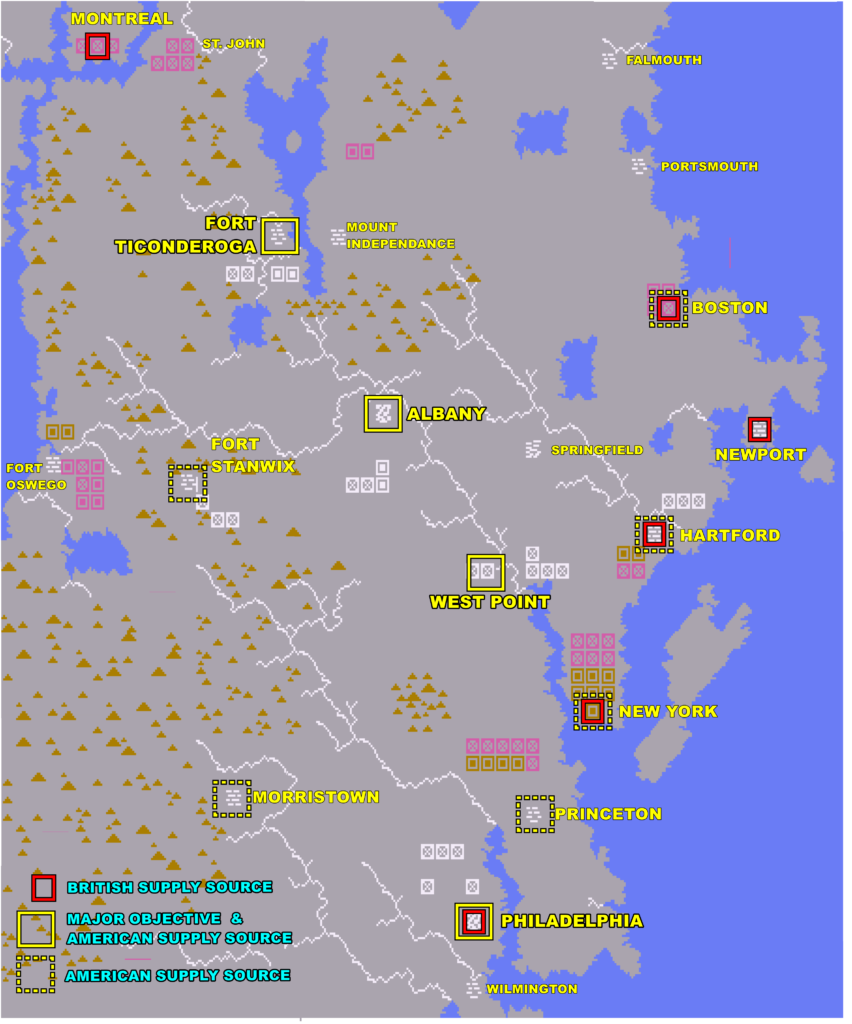
My 25 units are in white, while the British are in pink. Both armies are composed of a mix of regulars (units represented by a cross) and militiamen (square). The British can also count on the support of Hessians (brown). In total, I am fighting against 50 units.
While outnumbered 2:1, I occupy the centre of the map. Even better, I can be supplied (=”reinforced”) by most of the cities on the map, while the British army and the Hessians can only be supplied by 5 ports on the Atlantic and the city of Montreal. The British loyalists (their militia) can be supplied by the same cities as my own men, but there are only 10 units of them.
These supply rules are extremely favourable to the Americans and determine my strategy. As long as I hold Fort Stanwix and Fort Ticonderoga, I can cut all the British and loyalists forces in the West and North-West from supplies, except maybe a trickle from Montreal. I will then be able to destroy those forces and then focus on the British coming from the East. Hence :
- I will defend the two forts, with reinforcements coming from Albany,
- On the other hand, neither West Point nor Hartford can be defended so I will immediately abandon them. The units in the area will move to Albany,
- Philadelphia will be defended by the force available locally, ideally holding the port but if not at least distracting a significant chunk of the British forces,

I withdraw my forces near New York without any hiccups, and the first part of January is spent preparing my positions while the Anglo-Hessians approach. The real combats start in February.
In Philadelphia, it does not go well at all. Poor positioning costs me one unit as I block the retreat of one of my own units.
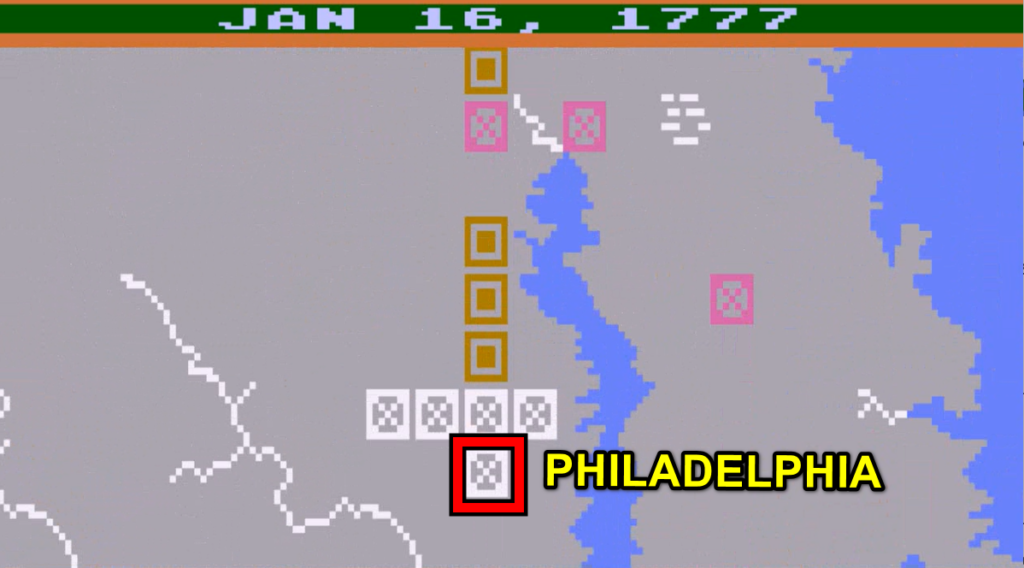
I am quickly overwhelmed, losing one more unit. By the middle of February, Philadelphia is lost – which means that now the British have supplies in the area and I don’t.
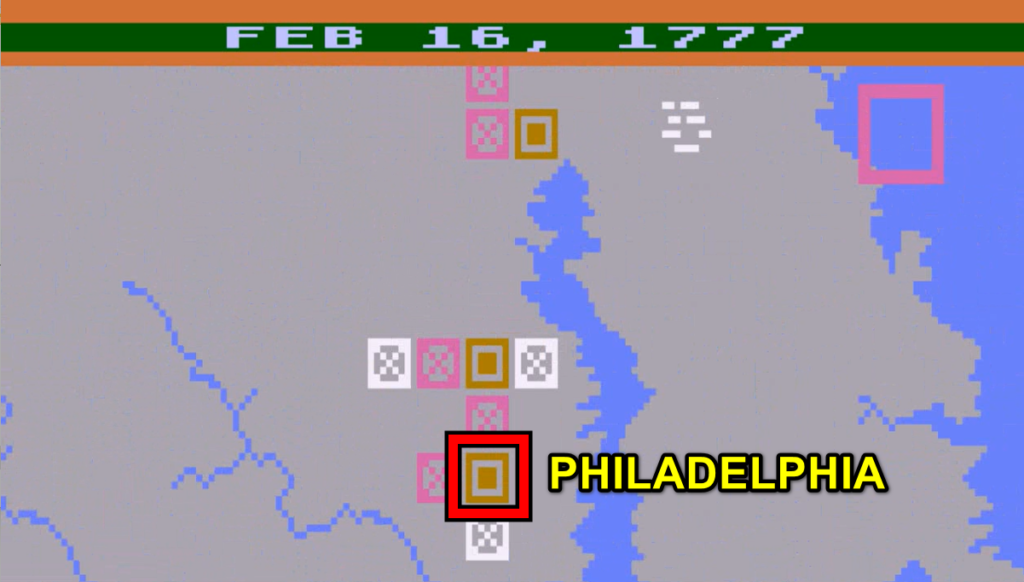
I manage to withdraw to units for refit & repair to Morristown, one of them after a long detour through New Jersey.
On the Western Front, it is the opposite. Taking positions in the hills surrounding Fort Stanwix, my forces stop Barry St Leger’s force dead in its tracks.
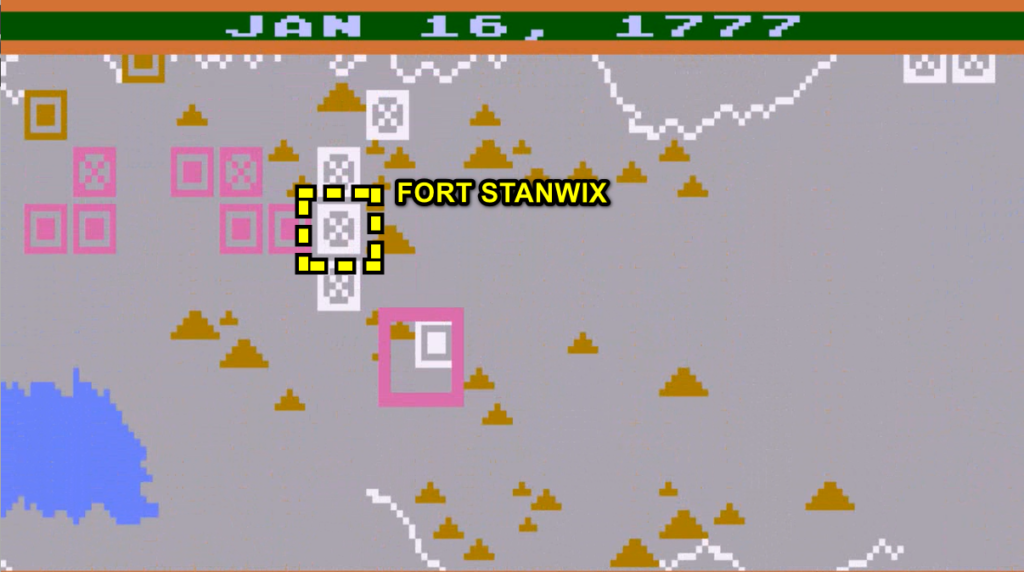
I manage to rotate my units, so each of them is sometimes in the middle receiving damage, and sometimes on the side. The supplies from Fort Stanwix do the rest. Early March, a final counter-attack scatters what’s left of the attackers.
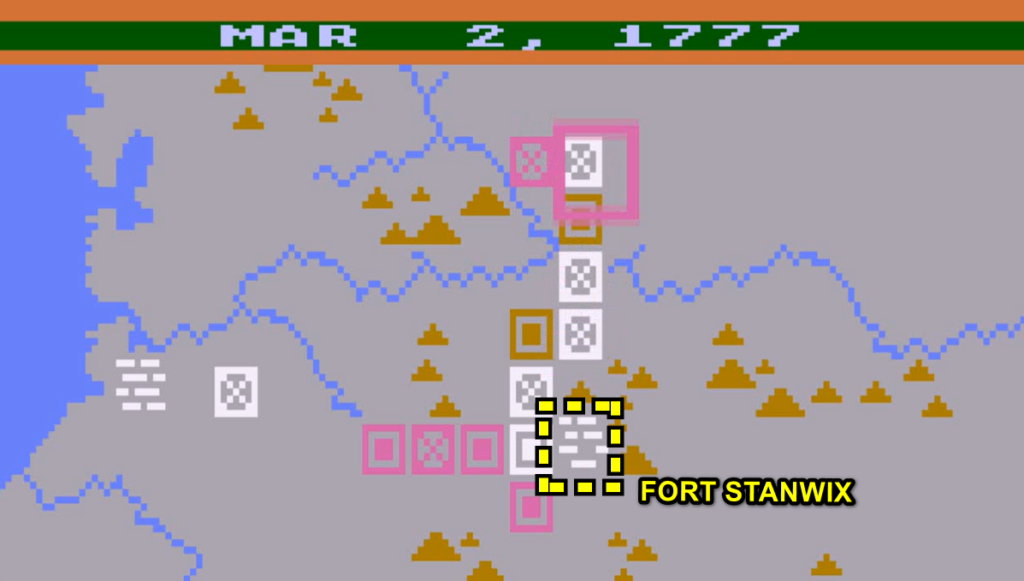
In the West, my only remaining problem is on how to surround and destroy efficiently the few remaining English units.
Finally, Fort Ticonderoga is a mess. I choose to defend on the Southern side of the river, giving me a strong defensive bonus but no strategic depth to retreat.
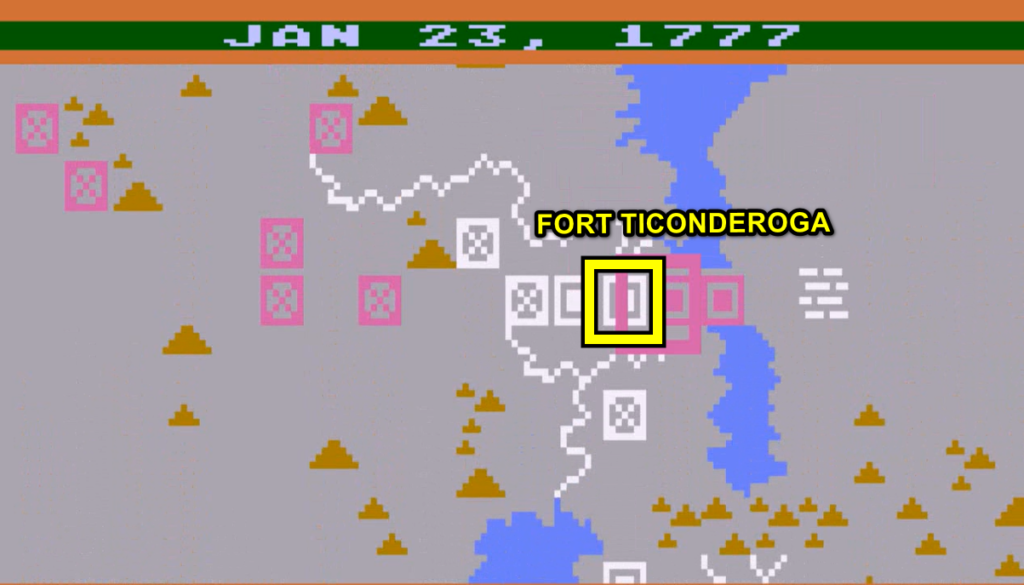
Alas, there are a lot of British units, and eventually they break through, taking the Fort :

I retake it one week [turn] later…
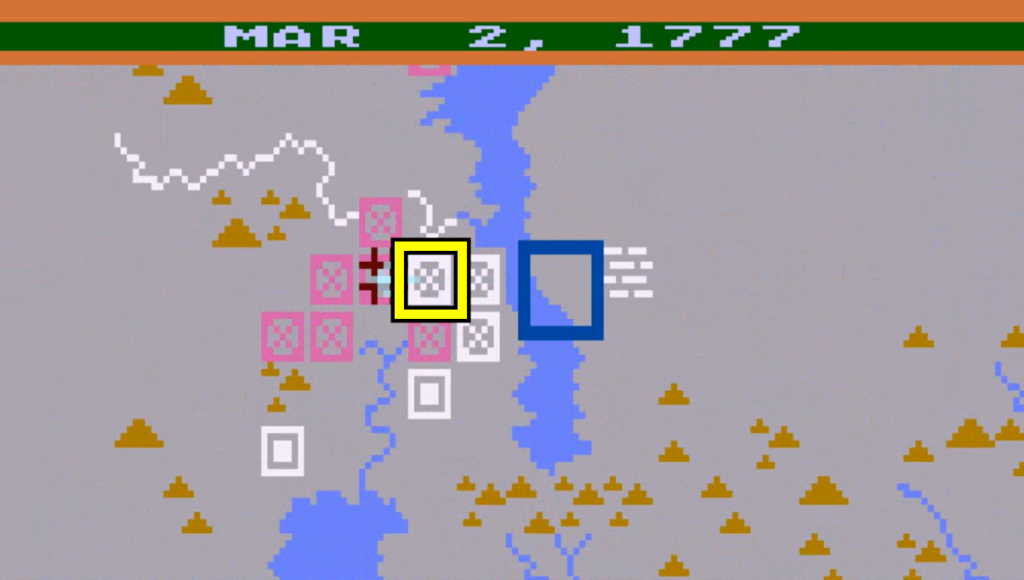
And I lose it again the following week…
The good news is that I destroyed all the British loyalists in the area, and Fort Ticonderoga does not give any supply to the British regulars, so all their supplies are still coming from Quebec. This gives me an idea in March, just as Spring started…
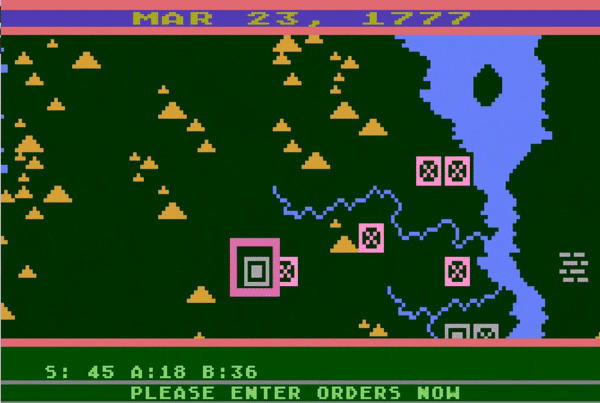
At this point, I lost 7 units while destroying 14 British units, leaving 18 American units against 36 British units.
In early March, the most decisive battle starts around Albany :

The Hessian assault is stopped. I immediately counter-attack to destroy the Hessian units

It is a mixed success. I destroy two enemy units, but weaken my line and lose two of my own units. Not great – at this very moment I am attacked by isolated British and German units from the West and the South :

The timely arrival of some reinforcements from Fort Stanwix but also from the survivors of Fort Ticonderoga (after a refit in Morristown) saves the day :

At the beginning of May, I have the situation totally under control :

Speaking of Fort Ticonderoga, the defenceless Montreal had been seized by my militia mid-April, and whatever trickle of supplies the British regulars had near Lake Champlain is gone :

And, well, I have pretty much won at this point ! The AI ran out of steam and unlike in Eastern Front 1941 it never receives new units. Having destroyed 3 of the 4 enemy assaults, I leave the AI with its former Philadelphia expedition and a handful of isolated units here and there. Furthermore, in May all American units receive 50 in muster (“maximum”) strength, which represents +25% to +100% capacity depending on the specific unit.
In June, having easily destroyed the former Philadelphian force in front of Albany, I split my force in two : one small force moves toward Fort Ticonderoga, the rest toward New York.
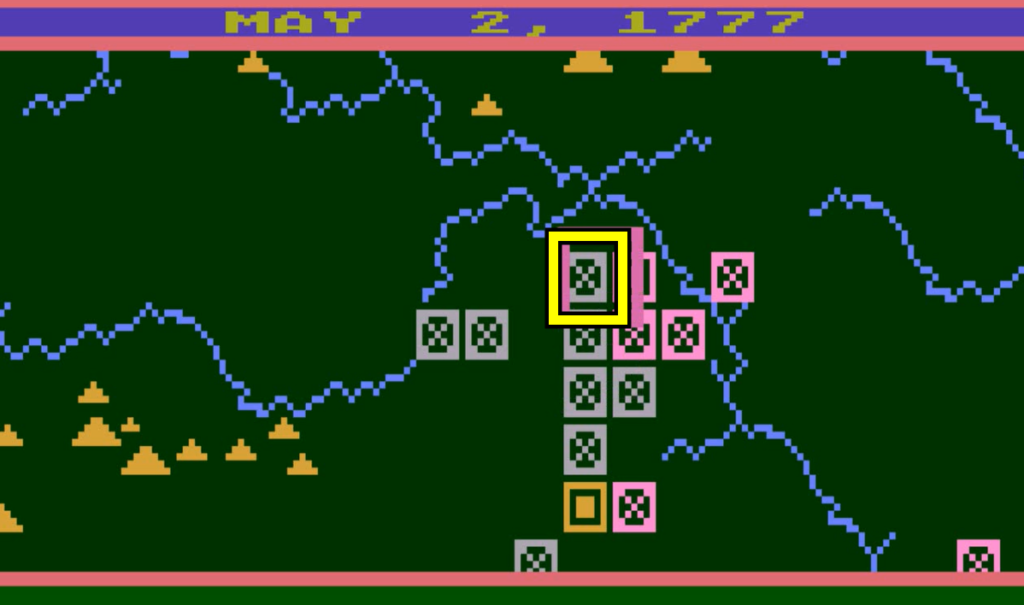
There is a last token resistance near West Point, where the British units are in supply, but the city falls before the end of the month.
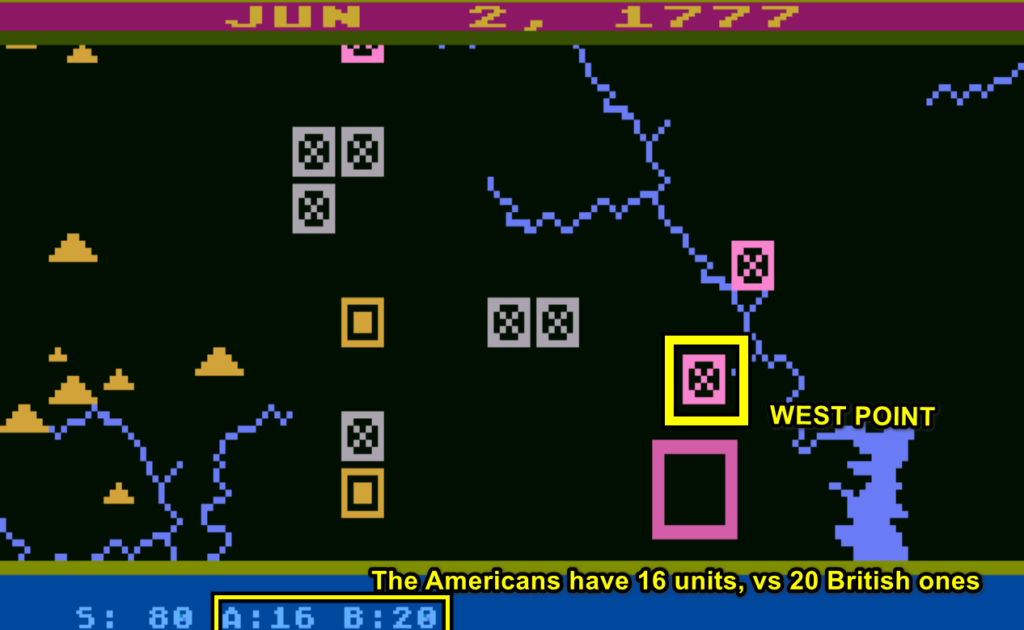
In May, the British had 28 units. In June, they fall to 20 units. In July, they have only 10 left, most of them defending the objective cities and the ports, the rest roaming in the wilderness trying to escape murderous Americans.
The game ends in October, and the only reason it did not end the first week of September is because I wanted to make sure I controlled every single city before destroying the last unit I had trapped between Ticonderoga and Albany :

After such a victory, with every single city retaken, every single British, loyalist or Hessian soldier dead or captured, we don’t even need the French to intervene. Undoubtfully, the Americans owe the decisive victory at Saratoga to Benedict Arnold, and he will without any doubt be the first President of the United States. I fail to see a man who served the Revolution more selflessly and more gallantly !
Rating & Reviews
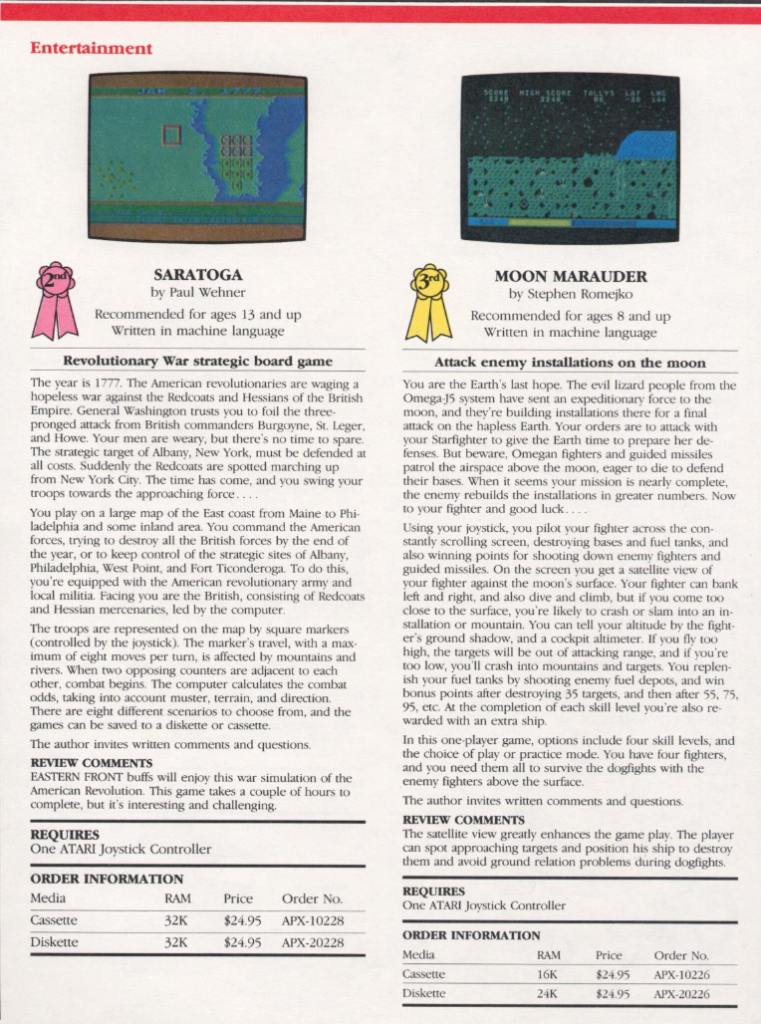
Saratoga by Paul Wehner, published by Atari Exchange Program (APX)
First release : September 1983 on Atari 8-bits
Tested on : Altirra emulator
Total time tested : Around 2 hours
Average duration of a campaign: 1 hour
Complexity: Simple (1/5)
Would recommend to a modern player : No
Would recommend to a designer : No
Final Rating: Obsolete
Ranking at the time of review : 36/81
The information below comes from an ANTIC’s interview of Paul Wehner.
Paul Wehner, a Berkeley-trained chemist working for the Eastman Chemical Company, acquired an Atari 800 in 1981 or 1982. Already programming for his work, Wehner wanted to learn some machine code for his Atari. An amateur of wargames and impressed by Chris Crawford’s Eastern Front 1941, he decided to make his own version of Crawford’s game – Wehner quips that he chose the US Independence War because it was the other war he remembered from school. Wehner claims that he did not look at Crawford’s source code (released in Winter 1982-1983), instead trying to understand on his own how Crawford did things.
Despite Sataroga winning the second prize for the “Fall 1983 Contest for consumer products“, Wehner recalls he only earned around one thousand dollars from APX. Having completed his objectives of learning Assembler and making a game, Wehner never programmed another video game again.
A. Immersion
Very poor. The 18th century, particularly in the New World, was an era of siege warfare and pitched battles. In Saratoga, armies move like WW2 divisions (but WW2 divisions that can quickly cross any terrain, including some sections of the sea) and fight as part of a frontline until total elimination of the enemy. It does not feel like a game about the American Revolution.
B. UI , Clarity of rules and outcomes
Good. Eastern Front 1941 was incredible for 1981, and Saratoga inherits most of that. I still rank it below its predecessor : The manual is incomplete, whereas the manual of the Atari edition of Eastern Front 1941 was a beautiful thing. Turns are also solved too quickly – much faster than in Eastern Front 1941 – and given the battles happen in many different places you can only check one area at the same time. Still, the game is very easy to play : just drag & drop your units.
C. Systems
Adequate. The game system is very similar to the one of Eastern Front 1941, with a change that I think is for the better : supplies radiate from cities/port and not from the border of the screen. Unfortunately, unlike Eastern Front 1941 supplies only determine how fast units heal, so if your units are at full strength you don’t really care.
Everything else is at least “a bit worse” than Eastern Front 1941. In particular, the balance feels totally off. Units are at the same time too fickle (they are too easy to force to retreat) and too sturdy when in supply (they 35 – 40 “muster strength” every turn), so the only efficient way to destroy them is to force a “retreat” from a position from which they cannot retreat, which causes so much extra damage that they are destroyed almost instantly. While it was also an issue I had in Eastern Front 1941, it is extreme in Saratoga especially since the absence of a long frontline makes it trivially easy to execute.
Terrain is largely irrelevant, when historically it played a huge role in slowing down Burgoyne. With only two types of infantry in the game (as historically), marginal terrain impact and a forgiving supply system, the game feels shallow and has none of the strategic depth of Eastern Front 1941.
D. Scenario design & balancing
Very poor. The game includes 8 scenarios, with the last 3 of them randomized in terms of unit placement

With the exception of the first tutorial-ish scenario, the scenarios with “1 to 1” relative strength are not necessarily easier than the other. Instead, the American units are in those scenarios much weaker than the British ones. In all cases, the optimal strategy is to defend around Albany, as far as possible from Montreal and the US ports. No unit ever spawns during the campaign, making the time pressure minimal.
The AI is terrible. It leaves one unit to defend each objective (but not its supply sources if they are not an objective city, allowing me to take Montreal), then sends everything else in long columns toward its objectives. The units never deploy before the attack, instead attacking one after the other. Those “columns” represents the worst possible tactics given the no-possible-retreat-is-destruction rule.
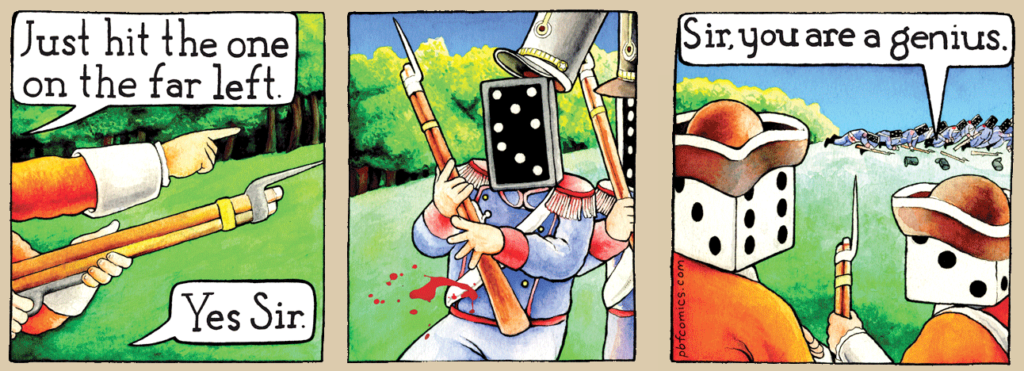
Enemy units never regroup and while depleted units stop their attacks, they wander haphazardly instead of trying to go back to a supply source. I had to spend the end of my AAR mopping up a large number of British units between Lake Ontario and Lake Champlain, units that could have easily moved to the East of the map to resupply.
The AI and the game in general would have been much more interesting if the AI formed wide fronts before attacking (ideally with the terrain being much more impactful). It would have been unhistorical of course, but then the scale of the game is already unhistorical anyway, and as it is we have neither fun nor realism.
E. Did I make interesting decisions ?
Sometimes. The most interesting decision was probably the unit allocation between Fort Stanwix, Fort Ticonderoga and Albany.
F. Final rating
Obsolete. Saratoga could have been a decent game in 1981 – 1982 for anyone who wanted more of Eastern Front 1941 but could consistently beat the game. In 1983, Saratoga arrived too late : the 1982 edition of Eastern Front 1941 included 2 additional non-tutorial scenarios (1942, and an expert mode), and APX proposed another scenario disk and a scenario editor. In these circumstances, Saratoga could not compete. Certainly, it looks like Eastern Front 1941, but if you open the hood it lacks all the hidden magic sauce (the balancing, the quality of the AI, the time-pressure) that made Eastern Front 1941 unique. It ends up being a competently-coded but perfectly bland game, not even leveraging its original theme. Not bad for a personal training project that was not supposed to be commercialized in the first place, but not enough to be anywhere near the top of my leaderboard.